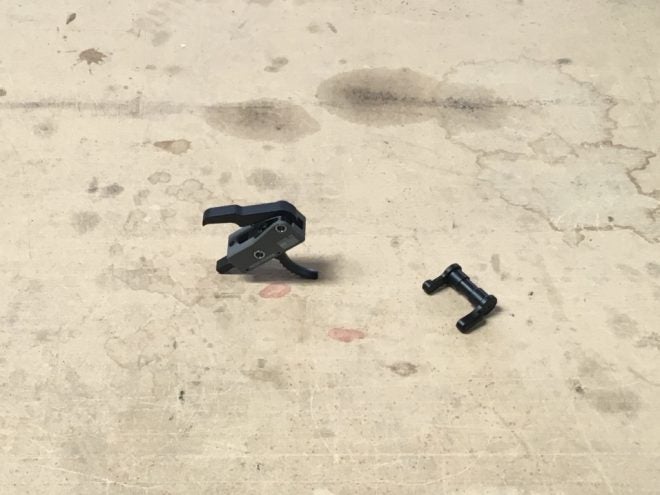Triggers are one of those hot topics that everyone likes to give their input on. Anything from “Back in my day, we only used mil-spec. And we liked it. Now get off my lawn…” to “My race trigger is so light it’s pretty much full-auto…” to “This trigger fires when you pull. AND release…”. There is also a wide variety of quality out there, from pretty much every manufacturer. If you find a brand you like, you swear by it, and snoot upon the others. Kind of like scopes. But I digress…
Russell Phagan (of KE Arms) has always been super involved with sending products out to us and getting us samples of new products, sometimes even before they are widely available. As an actual shooter himself (not just in his role at KE Arms) he is very involved with the industry as a whole and actively seeks to highlight and promote improvements. This past year at Superstition Mountain Mystery 3-Gun he actually let me get some hands on time with the SLT-1, making me swear to silence until release. Then offered to send me one to run and use which I, of course, readily accepted…
Trigger Construction & Specifications
The KE Arms SLT-1 is a simple drop in replacement trigger designed to fit in any mil-spec fire control pocket. It is single stage and set for a nominal 4.5 pounds. It has the usual yadda-yadda talking about the awesome break and reset, with minimal take-up and over travel. But lets be honest here, who is going to advertise a trigger like this: “our trigger has a break like a wet tissue, and the shoe touches both the front and rear of the trigger guard during operation; please contact your local doctorate level mechanical engineer for installation as certified armorers will not be sufficient”.
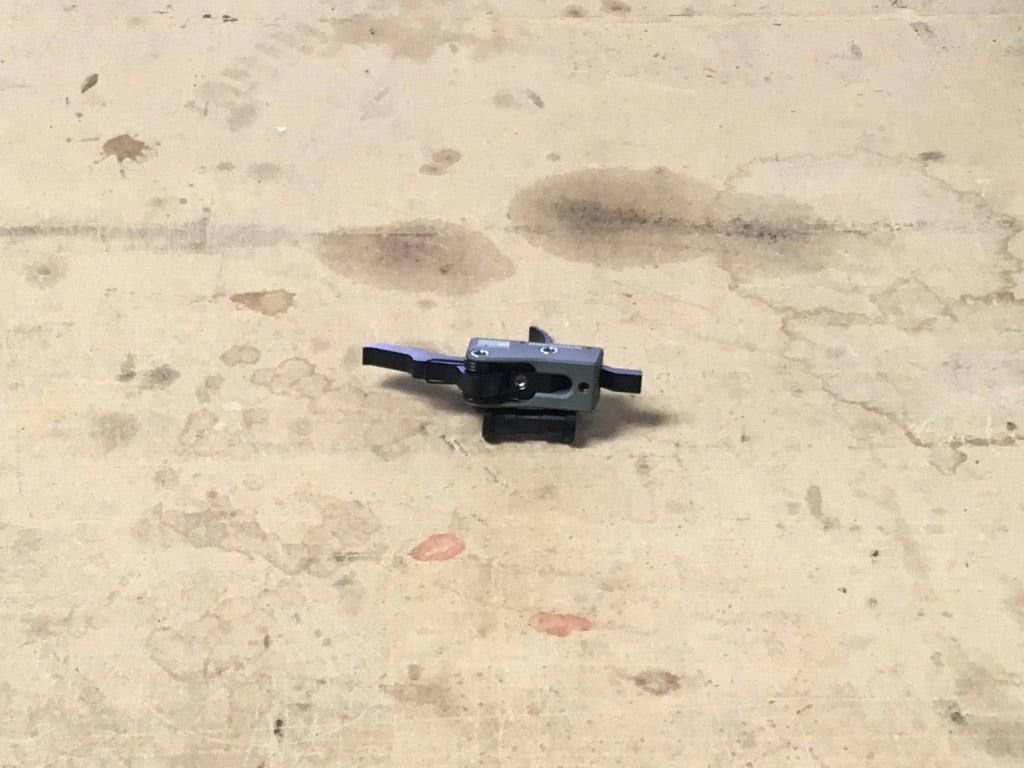
Hammer is released. Note the simplified build and contained housing.
Where this trigger is really different is that it is missing a component that most other triggers have–a disconnector. “WHA?!?” I can hear some of you say… Truth. No disconnector. What this does to the trigger is change the way the whole thing operates. No longer does the hammer have to drive through the disconnector–the bolt simply pushes the hammer out of the way as the action cycles. Because the hammer is isolated, those forces are not being transmitted to any other parts of the trigger. The hammer, then, is constantly engaged with the sear meaning it can reset and fire without having to deal with other components being in the way. Check out the following video around the 1:25 mark to hear a description of the way it works.
What this magical change also enables is that the safety can always be applied. Even when the hammer is down, or cocked. No more leaving it on “pew-pew-pew” mode until you charge it (yes, yes, I know the hammer is down). This also adds another safety margin when having to perform administrative functions and deal with malfunctions, and provides a visual indicator to overzealous range officers that have never seen an AR.
KE Arms has also created some additional reliability by sealing some of the moving parts in the underside of the housing, reducing the potential for fouling when you shoot your nasty Tula through it.
The KE Arms SLT-1 has been tested thoroughly with traditional AR calibers and pistol caliber blow back systems. It has also been tested in the Sig Sauer MPX with no damage.
…
While we have sucessfully tested the SLT-1 with Tula and Wolf ammunition in .223, .308, and 9mm, we have NOT tested it with 7.62x39mm com bloc surplus with hard primers.
To get an idea for how it works, check out this video:
Observations
For me, the RISE triggers are MY gold standard, and I compare everything to them, within the level of duty they will see. I’m not so much of a snoot that I can really differentiate between a 3 and 5-pound trigger when I am running a gun. I can feel it when I am function checking, or when I am measuring. When I am shooting, I’m actually focusing on my fundamentals and not how heavy (or light) my trigger is. That said, the SLT-1 was consistently between 4 and 4.5 lbs on the trigger scale (for what that is worth).
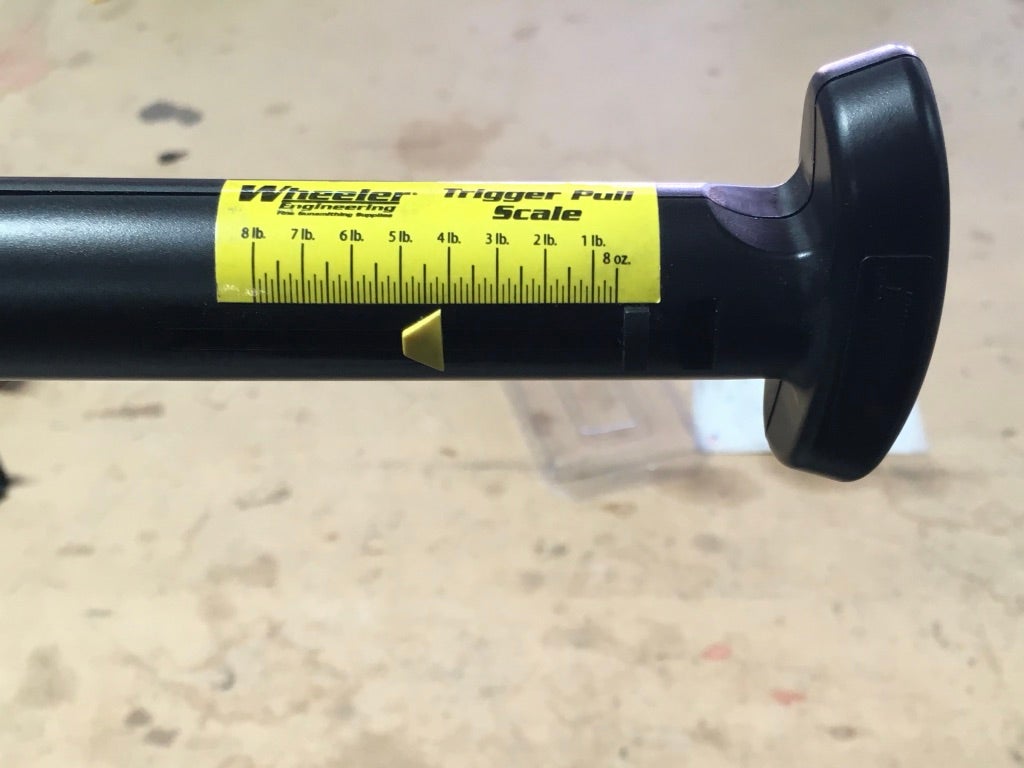
Consistently between 4 and 4.5 lbs as advertised.
I differentiate my triggers by what I will use for competition, and what will be used in a more “professional” context. My competition rifle still runs the RISE Armament 535, and likely will for some time. Until the KE Arms SLT-1, I’ve been running the RISE SST on my patrol and T&E Rifle.
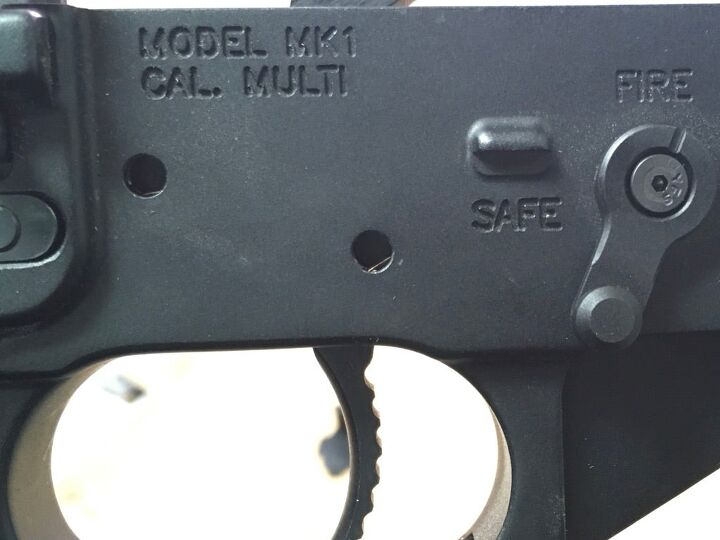
The little shiny bar in the trigger pin hole is the visible spring that locks the pin in place.
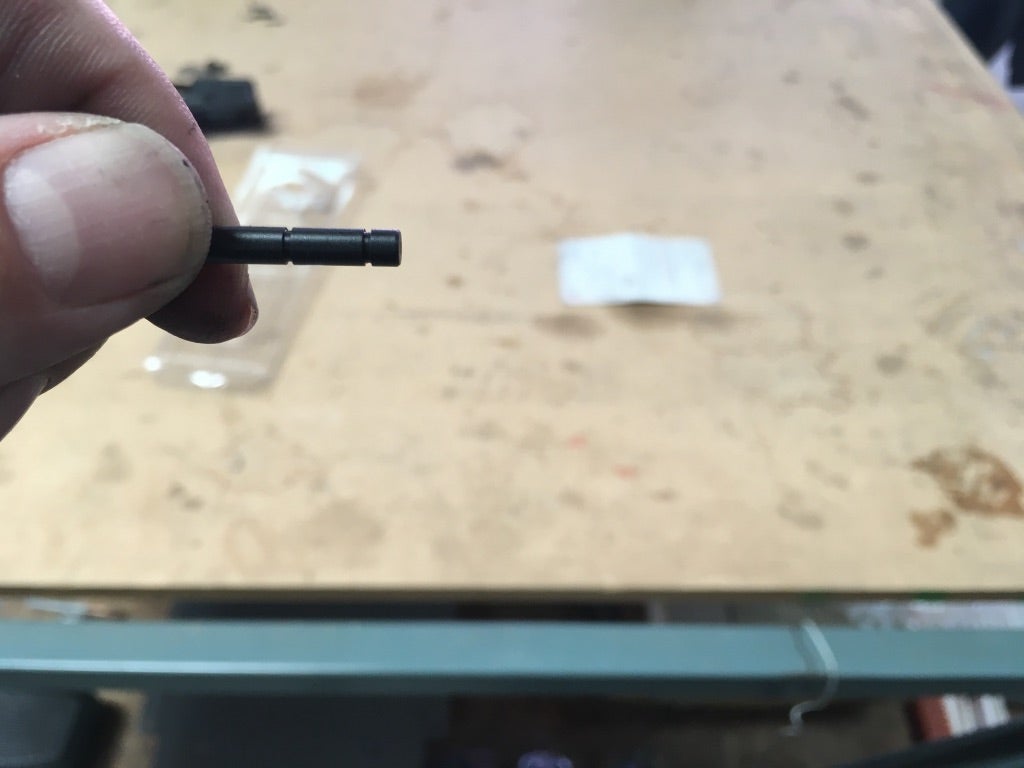
The pins have to go in so that the spring locks in the cut. It is easy to do since the locking cut is only one end.
Installation was a breeze. The SLT-1 just drops right into your rifle’s fire control pocket (assuming, of course, it is mil-spec). One nice thing is that it is retained with standard fire control pins (which are secured with springs). This is one pain point for me with my RISE trigger is that I have to use anti-rotation pins which interfered with my Odin extended mag release. It is definitely nice to be able to use standard pins… They even have a nice installation video:
I found the KE Arms SLT-1 to feel nearly identical to the RISE SST. The break and reset feel identical to me. The KE Arms had slightly less take up than the RISE, and neither of them had any over-travel.
The shoe on the KE Arms is well-made (as is the whole unit). It is solid feeling and is comfortable on the finger. I had no lateral play.
I am going to continue to run this trigger on one of my rifles, and we will see how it does over the next year–I’ll report back if I have any issues… Also just before this article was released, KE Arms sent me an updated version that had some improvements—namely a refined sear engagement. Russel indicated that it should have a cleaner pre-break than the original one I was sent, but I honestly couldn’t tell a difference.
Finis
In my few years with The Firearm Blog, I have had the opportunity to get hands-on with really more triggers than I have guns, and I have found what really appeals to me. I’ve used “budget” mil-spec triggers that are amazing and handled “high-end” triggers on $4k rifles that have the consistency of a microwaved rotten melon–mushy and gross.
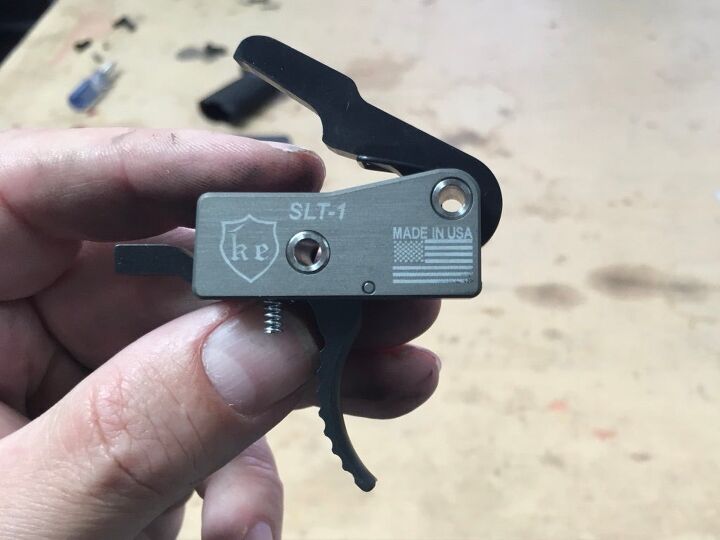
So far a great trigger. Easy to install, clean operation.
The pain point for most people, I would assume, is getting enough intel on good triggers, especially ones that cost upwards of $150 (and more). You may hate the break or the reset. The shoe that looks awesome on the website may be uncomfortable on your finger. Ultimately all you have to go on is other people’s opinions.
I can certainly recommend the KE Arms SLT-1 after running it for nearly 3 months and a couple thousand rounds. I beat my gear up on a regular basis, and given the amount of abuse it has already seen, I feel it will do just fine.
If you are interested in giving one a try, you can find them on KE Arms website for $199.95 at:
http://www.kearms.com/slt-1-sear-link-technology-trigger.aspx
 Your Privacy Choices
Your Privacy Choices
